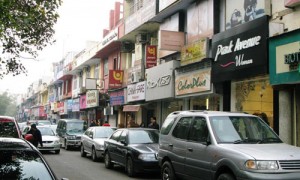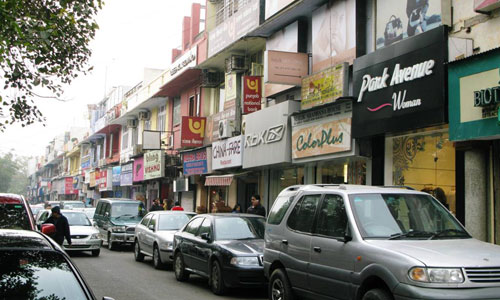 Defying any ears of a market slowdown, liquidity crunch and rising inventories, the April-June period saw a 65% growth in retail mall space supply across India over the previous quarter, with Mumbai alone adding 8.50 lakh sq ft of space. The news has come a surprise even to the optimistic industry analysts who had forecasted growth with Indian and foreign brands expanding their operations in India.
Defying any ears of a market slowdown, liquidity crunch and rising inventories, the April-June period saw a 65% growth in retail mall space supply across India over the previous quarter, with Mumbai alone adding 8.50 lakh sq ft of space. The news has come a surprise even to the optimistic industry analysts who had forecasted growth with Indian and foreign brands expanding their operations in India.
According to a report by real estate consultants Cushman & Wakefield, Pune saw the highest supply of mall space-1.2 million sq ft. The report said mall space supply in the city was expected to touch 2 million sq ft by the year-end, with five more complexes coming up. Also, Lower Parel, Goregaon and Malad may see a rise in rental values, while Andheri, Vashi and Ghatkopar will remain stable.
With the main streets also witnessing heightened activities, areas like Linking Road, Kemps Corner/Breach Candy and Colaba Causeway too registered a rise in values over the previous year.
“Majority of the supply that entered the market was concentrated in Pune, which added 1.2 million sq ft of mall space. Bangalore and Chennai together added 7 lakh sq ft,” said a Cushman & Wakefield report released on Thursday, July 28. In Mumbai, a new mall (Infinity) recently opened in Malad.
The city’s mall mania began over a decade ago, when the first mall, Crossroads, opened in Tardeo in 1999. Since then, more than 100 medium and large malls have come up in Mumbai, Thane and Navi Mumbai. Five more are expected by the year-end.
The report said Lower Parel, Goregaon and Malad may witness a further rise in rental values, while Andheri, Vashi and Ghatkopar are expected to remain stable. “The expected mall supply in the city was approximately two million by the year-end. The main streets also registered heightened activities, due to which Linking Road, Kemps Corner/Breach Candy and Colaba Causeway saw a rise in values over the previous year,” it added.
In the last quarter, national and international brands looked at expanding operations, especially to other tier 1 cities such as Pune, Chennai and Bangalore, where their presence was limited. “The growth of mall space supply in these locations is also the result of an increase in domestic and international migrant population, which has created demand for retail products,” said the report. Pune led the pack in supply of mall spaces (1.2 million sq ft) with the start of Phoenix Market City on Nagar Road. “With a steady rise in population, and increased demand from retailers to be present at the location, Pune may see a further rise in supply, with an expected addition of approximately 2 million sq ft by year-end. Vacancy levels in the city were, however, high and given the anticipated supply, may rise further, creating a supply-to-demand mismatch, thereby affecting rental values for the area negatively,” it said.
In the national capital region, mall rentals remained stable due to limited vacancy and no new supply, but high streets like Connaught Place and Greater Kailash IM Block registered growth in rental values. “Khan Market remained stable and perhaps the most expensive main street in India at a rental value of Rs 1,200 per sq ft per month. With limited vacancy, Khan Market is expected to see a further strengthening of values,” said the report.
In Bangalore, most locations saw an addition of approximately 3.75 lakh sq ft of mall supply, launched with full occupancy.
“As a result, vacancy levels remained controlled and also contained rental values of locations. High streets, on the other hand, saw upward movement in rental values given that most notable transactions took place in these locations. Bangalore continues to attract retailers due to its regularly growing population,” it added.
The city’s mall mania began more than a decade ago, when the first mall, Crossroads, opened in Tardeo. Since then, more than 100 medium and large malls have come up in the city, Thane and Navi Mumbai. Five more are expected by end-2011.
The growth of mall space supply is the result of an increase in domestic and international migrant population, creating a demand for retail products.





